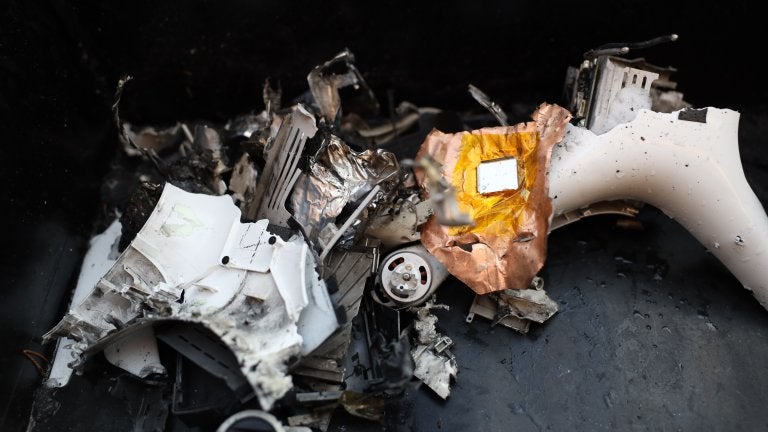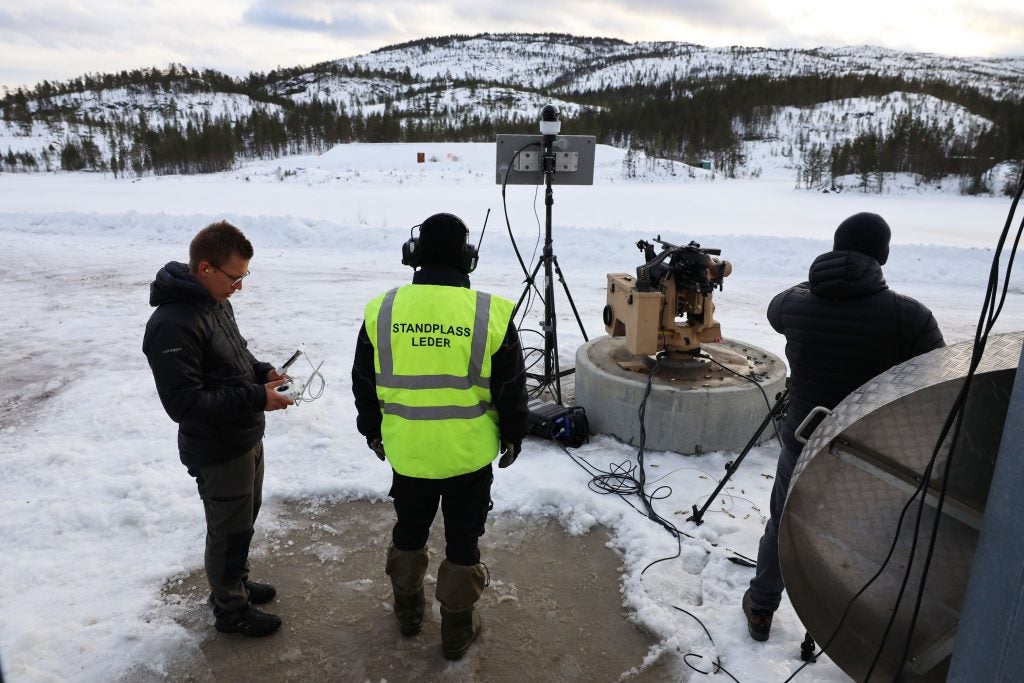Nammo Radio Controlled 40mm Airburst Unveiled
Last month, a collaboration between the Norwegian Defence Research Establishment (Forsvarets forskningsinstitutt or FFI) and Kongsberg Defense & Aerospace (KDA) unveiled their Counter Unmanned Aerial System (C-UAS) based on the tried and tested Kongsberg Protector remote weapon station (RWS). FFI have posted a video of shooting trials on their website.
Germany has already placed an order for the C-UAS (as reported here at Overt Defense) to the value of $27.21 million USD after a competitive tender. Kongsberg commented; “Kongsberg is very proud to win this first C-UAS competition, and we look forward to a long-term close cooperation with the German Army. With this contract, Kongsberg combines existing and new technologies entering a new growing market niche.” The Swiss soon followed.
The C-UAS platform works off three integrated sensor packages – the visible and infrared spectrum cameras already utilized on the standard Protector RWS and a new addition- radar. The C-UAS adds the Hensoldt Spexer 3rd generation radar system. The radar acts as long-range warning of the approach of a UAS and provides data for the cameras to lock onto the target. Researchers are also working on an audio sensor that could detect enemy UAS with no radar emission.
The platform can operate semi-autonomously, detecting, tracking and prioritizing targets for the human operator to engage. The drone killing itself is accomplished by the use of the recently unveiled Nammo NM264 HEDP-RF (High Explosive Dual Purpose- Radio Frequency) fired from a 40mm Heckler and Koch GMG (Grenade Machine Gun) and the Nammo Programming Unit which times the airburst HEDP round to detonate in close proximity to the enemy UAS via radio controlled fuses.

An FFI spokesperson explained; “Using the sensors we measure the distance to the drone and calculate when the grenades will detonate. Since the grenades are moving relatively slowly, we must also make a forecast of where the drone will be when the grenades arrive. When the operator presses the trigger, the weapon station does not aim where the drone is right now, but where it believes the drone is when the ammunition reaches.”
Nammo believes they can now remove the tracer component as the NM264 in conjunction with the Programming Unit provides a much improved first round hit probability, making the tracer component, traditionally used to manually correct fires, virtually obsolete. Nammo expects to be able to consequently increase the explosive content of the NM264 by up to 25%. A Nammo demonstration video has been posted on YouTube.

